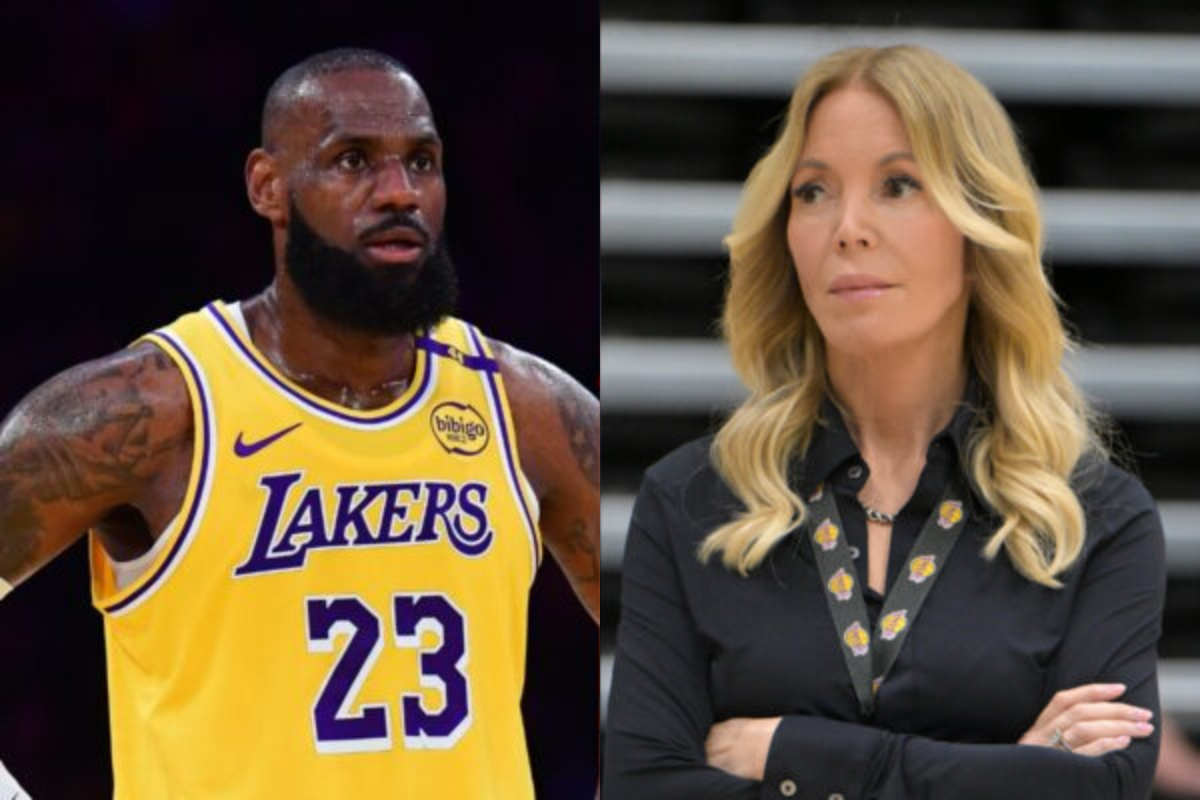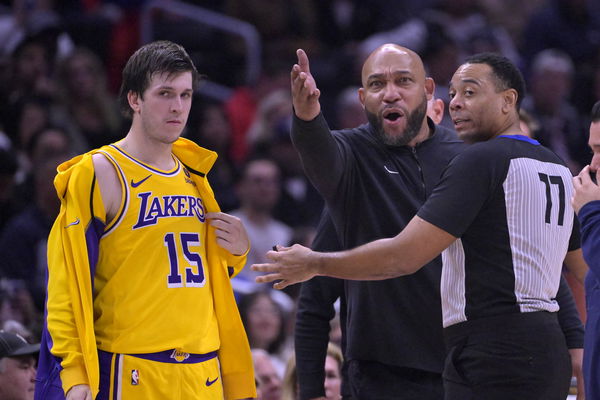
Imago
Credits: Imagn

Imago
Credits: Imagn
When the Lakers ruled out Luka Doncic and Austin Reaves against Portland, most fans braced for a loss. Instead, JJ Redick’s fiery leadership turned fatigue into fight. On the road and short-handed, the Lakers stunned Portland 123-115, fueled by Redick’s relentless energy and accountability. He’s not afraid to call out stars, push limits, and demand effort every possession. You wouldn’t have seen this kind of fire under former coach Darvin Ham, the same coach many called a scapegoat for L.A.’s flaws, fired to mask the team’s own inconsistencies.
Speaking on The Hoop Genius Podcast, Darvin Ham finally addressed whether he truly was the Lakers’ scapegoat. “I’m in the facts, man, not feelings,” he said firmly. Reflecting on his stint with the Lakers, Ham added, “We did a lot of cleaning up. You know, the roster was imbalanced… it was a lot going on between our star players and just trying to figure all that out. And we got to a place where we were able to make a deal, you know, that really spearheaded our run to the Western Conference Finals that year. And I thank all of those guys for playing hard, putting it on the line for me.”
Ham’s first year at the helm wasn’t smooth. The Lakers began 2-10 before a midseason roster overhaul sparked a turnaround. That improbable run carried them from the play-in to the Western Conference Finals, where they ultimately fell to the Denver Nuggets.
ADVERTISEMENT
Article continues below this ad
From the way Darvin Ham spoke, it’s clear he doesn’t see himself as the Lakers’ scapegoat. “I have no regrets,” he said calmly. “I just wish I had time to see the program come to full fruition, but I thought we laid great groundwork to get them back. You know, they’re always going to be the most popular team. But I felt like my staff and I, we got them back to being legitimate championship contenders, and that’s all you can ask for as a coach.”

USA Today via Reuters
Jan 23, 2024; Los Angeles, California, USA; Los Angeles Lakers guard Austin Reaves (15) looks on as head coach Darvin Ham argues a foul call with referee Karl Lane (77) in the second half against the Los Angeles Clippers at Crypto.com Arena. Mandatory Credit: Jayne Kamin-Oncea-USA TODAY Sports
Then came a line that perfectly summed up his mindset, one that probably came from years of quiet resilience. “My granny used to say something like, ‘Whatever you do in life, whatever job you take on, just make sure you leave the place better than you found it.’ And I felt like I was able to do that in L.A.”
ADVERTISEMENT
Article continues below this ad
Top Stories
When the Lakers parted ways with Darvin Ham in May 2024, it didn’t exactly come as a shock but it did stir up one of the biggest debates of the offseason. Ham’s firing came just days after L.A. was bounced from the playoffs by the Denver Nuggets for the second straight year.
Despite having LeBron James and Anthony Davis healthy for most of the season—a luxury the Lakers rarely had, something clearly wasn’t clicking. The front office called it a ‘disconnect with the locker room.’ Many fans, though, called it what it felt like: a scapegoat move.
Ham’s record wasn’t bad by any stretch. He went 90-74 in the regular season and helped lead the Lakers to the Western Conference Finals in his first year. But inconsistency haunted the team all season. They blew double-digit leads in every loss to Denver, including one where they led by 20 points in the second half.
ADVERTISEMENT
Article continues below this ad
Players reportedly grew frustrated with Ham’s rotations and late-game adjustments. Even LeBron publicly defied one of his strategies during a key game against the Clippers. For some, that was proof Ham had lost the locker room. For others, it was proof that the locker room never truly gave him a fair shot.
Veteran analyst Rob Parker said it best back then: “That’s not grounds to be fired. Those are grounds to be dismissed as a scapegoat.” And looking at the numbers, it’s easy to see why. The Lakers ranked 8th in three-point shooting percentage, yet they were 28th in attempts. They were elite from deep but refused to lean into it, something many saw as a reflection of front-office strategy rather than coaching stubbornness.
When Ham’s replacement later emphasized spacing and perimeter play, it only fueled the idea that Ham was sacrificed to cover up deeper issues in the roster construction. So was Darvin Ham really the problem, or just the easiest one to point at? It depends on who you ask. The truth is probably somewhere in between. But as Ham himself said later, he left the Lakers better than he found them.
Darvin Ham’s impact on the Lakers
Darvin Ham’s time with the Lakers may have been short, but it left a mark that can’t be ignored. When he arrived in 2022, he inherited a team still reeling from a disastrous 33-49 campaign, one that had failed to make the playoffs after trading key role players from the 2020 championship roster.
Ham reflected on the turnaround with pride: “I always try to keep it solid and stay on message, you know, being competitive, being together, being accountable to one another. And it translated. They went when I got hired, they were 33 and 49. And we ended up getting 10 plus wins from the previous season and finished 43-39.”
Ham didn’t just stabilize a struggling team, he helped orchestrate a mid-season transformation. The Lakers underwent a roster overhaul, parting ways with Russell Westbrook and bringing in D’Angelo Russell, Jarred Vanderbilt, and Rui Hachimura to complement LeBron James, Anthony Davis, and Austin Reaves. That new balance paid immediate dividends.
Ham guided the Lakers through the play-in tournament, beating a young and hungry Minnesota Timberwolves squad to secure the No. 7 seed. “We finally got a play-in spot and secured it by beating a young, up-and-coming Minnesota team, Anthony Edwards and company,” Ham said, highlighting the significance of that milestone.
The momentum didn’t stop there. Ham’s Lakers upset the No. 2-seeded Memphis Grizzlies and the No. 6-seeded Golden State Warriors, advancing to the Western Conference Finals for the first time since the 2019-20 season.
Over two seasons, he compiled a 90-74 regular-season record, a .549 winning percentage, and achieved two play-in tournament victories, a testament to his ability to keep the team competitive under pressure. His time also included the franchise’s first-ever in-season tournament victory, proving Ham could navigate high-stakes situations with poise.
ADVERTISEMENT
ADVERTISEMENT
ADVERTISEMENT
ADVERTISEMENT

